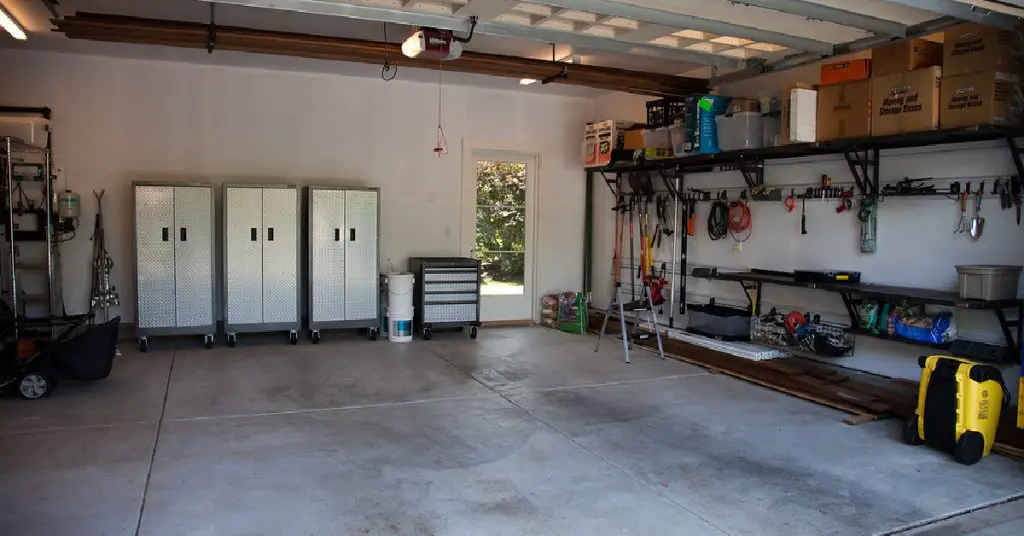Do you have bugs in your garage at night? Do you want to get rid of them and protect your health and property? If so, you are not alone. Many homeowners have the same problem. Bugs come to garages at night because they find shelter, warmth, food, and moisture there. Some bugs can also follow the light or heat from your garage door. But bugs can be harmful to you and your garage. They can bite, sting, spread diseases, damage your belongings, and attract other pests. That’s why you need to keep bugs out of the garage at night. In this article, we will show you how to keep bugs out of garage at night with some tips and methods that will help you keep your garage clean and pest-free.
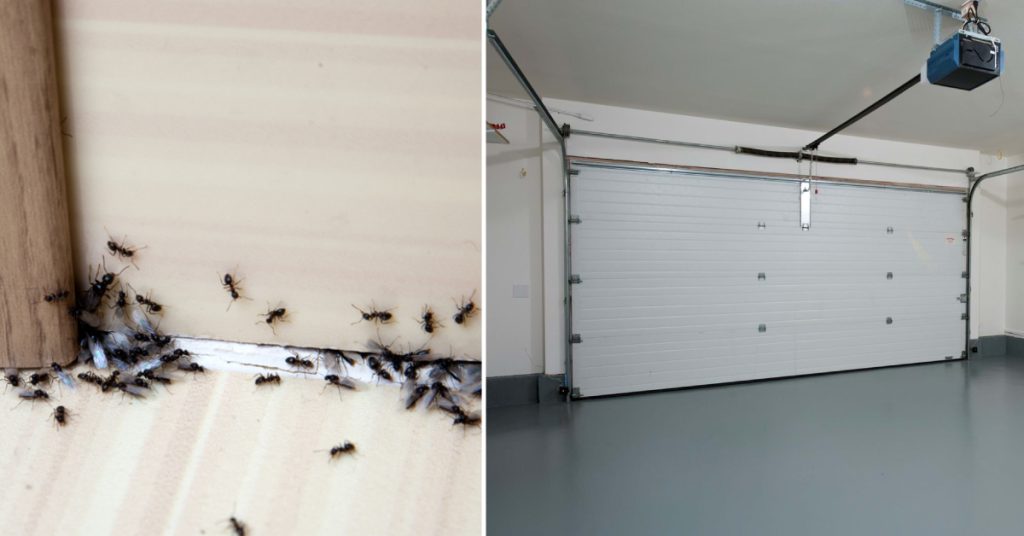
7 Easy Steps for How to Keep Bugs Out of Garage at Night
Here are 7 easy steps that will help you keep bugs out of your garage at night:
Step 1: Identify Common Nighttime Garage Pests
The first step to keep bugs out of the garage at night is to identify what kind of bugs you are dealing with. Different bugs have different behaviors, habits, and preferences that affect how they enter and infest your garage. Knowing what kind of bugs you have will help you choose the most effective methods to keep them out.
Some common nighttime garage pests are ants, spiders, mice, termites, beetles, sowbugs, flies, silverfish, crickets, and mosquitoes. You can identify these pests by their appearance, signs of infestation, or damage they cause. For example, you can look for droppings, nests, webs, holes, or chew marks in your garage. You can also use a flashlight or a magnifying glass to inspect your garage for pests. You can also consult online resources or pest control experts for more information on pest identification.
Step 2: Seal Cracks and Gaps
The second step to keep bugs out of the garage at night is to seal any cracks or openings around the perimeter of your garage door. These cracks and gaps provide easy entry points for bugs to sneak into your garage. You can use caulk, steel wool, or weatherstripping to fill these cracks and gaps. These materials will not only prevent bugs from entering your garage but also improve your garage insulation and energy efficiency.
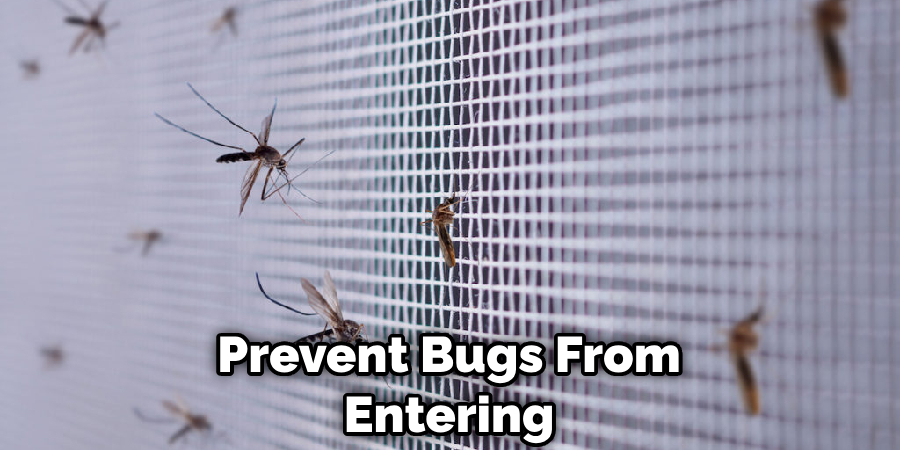
To seal cracks and gaps in your garage, you will need a caulking gun and silicone-based caulk, steel wool, weatherstripping or rubber seals, a utility knife and scissors, a tape measure, and a pencil. Here are the steps to seal cracks and gaps in your garage:
- Inspect the perimeter of your garage door for any cracks or gaps that are larger than 1/4 inch wide. Mark them with a pencil.
- Cut a piece of steel wool that is slightly larger than the crack or gap and stuff it into the opening. This will act as a barrier against rodents or insects that can gnaw through caulk.
- Apply a bead of caulk over the steel wool and smooth it with your finger or a tool. Make sure the caulk fills the entire crack or gap and adheres well to the surface.
- Repeat the process for all the cracks and gaps around your garage door.
- Measure the width and height of your garage door and cut pieces of weatherstripping or rubber seals accordingly.
- Peel off the backing of the weatherstripping or rubber seals and stick them along the edges of your garage door frame. Make sure they form a tight seal with the door when it is closed.
Step 3: Use Bug-Repelling Lights and Natural Repellents
The third step to keep bugs out of the garage at night is to use bug-repelling lights and natural repellents around your garage door. Some bugs are attracted to light sources at night, so you should turn off any outside lights near your garage door. You can also use yellow LED lights or sodium vapor lights instead of white lights as these lights are less attractive to bugs. Additionally, you can use natural repellents like essential oils, citrus spray, or herbs to deter bugs from approaching your garage door. Some examples of natural repellents are lavender, peppermint, lemon grass, eucalyptus, basil, rosemary, and garlic.
To use bug-repelling lights and natural repellents in your garage, you will need yellow LED lights or sodium vapor lights, essential oils such as lavender, peppermint, lemon grass, eucalyptus, basil, rosemary, or garlic, a spray bottle, water, cotton balls, herbs such as lavender, peppermint, lemon grass, eucalyptus, basil, rosemary, or garlic. Here are the steps to use bug-repelling lights and natural repellents in your garage:
- Replace any white lights near your garage door with yellow LED lights or sodium vapor lights. These lights emit wavelengths that are less visible to bugs and thus less attractive to them.
- Fill a spray bottle with water and add 10 drops of the essential oil of your choice. Shake well to mix.
- Spray the solution around your garage door, especially near the cracks and gaps where bugs may enter. You can also spray it on your plants or furniture in your garage to repel bugs.
- Soak some cotton balls in the essential oil of your choice and place them near your garage door, especially near the cracks and gaps where bugs may enter. You can also place them on your plants or furniture in your garage to repel bugs.
- Grow some herbs such as lavender, peppermint, lemon grass, eucalyptus, basil, rosemary, or garlic in pots or containers, and place them near your garage door. These herbs have strong scents that bugs dislike and avoid. They also have other benefits such as beautifying your garage, purifying the air, or providing culinary or medicinal uses.

Step 4: Spray Insecticide on the Inside and Outside Baseboards of Your Garage
The fourth step to keep bugs out of the garage at night is to spray insecticide on the inside and outside baseboards of your garage. Insecticides are chemicals that kill or repel insects by affecting their nervous system or metabolism. You should choose an insecticide that is suitable for your target pests and follow the instructions and precautions carefully. You should also wear protective gear like gloves, goggles, and masks when applying insecticides and keep children and pets away from the treated area.
To spray insecticide on the inside and outside baseboards of your garage, you will need an insecticide of your choice, a spray bottle or a garden sprayer, and protective gear like gloves, goggles, masks, a cloth, or a paper towel. Here are the steps to spray insecticide on the inside and outside baseboards of your garage:
- Read the label of the insecticide carefully and follow the directions and warnings. Make sure the insecticide is compatible with your target pests and safe for your garage materials.
- Put on your protective gear and fill the spray bottle or the garden sprayer with the insecticide. Shake well to mix.
- Spray the insecticide along the inside and outside baseboards of your garage, covering all the cracks and gaps where bugs may enter. Spray from a distance of about 12 inches and avoid spraying on electrical outlets or wires.
- Wipe off any excess insecticide with a cloth or a paper towel and dispose of it safely.
- Repeat the process as needed or as instructed by the label.
Step 5: Set Up Traps and Barriers
The fifth step to keep bugs out of the garage at night is to set up traps and barriers to capture and deter pests. Traps are devices that lure, catch, or kill pests using bait, glue, or poison. Barriers are devices that block or prevent pests from entering or exiting your garage. Some examples of traps and barriers are sticky traps, snap traps, electric traps, screen doors, or curtains.
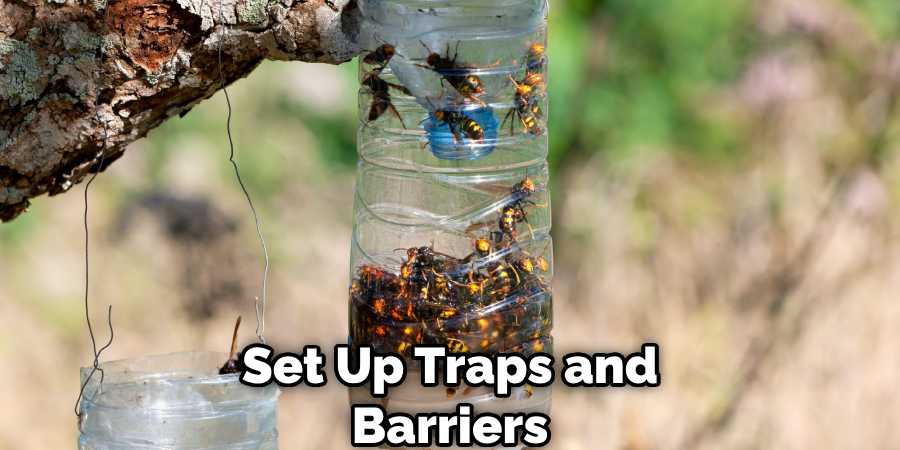
To set up traps and barriers in your garage, you will need sticky traps, snap traps, electric traps, screen doors or curtains, bait, or lures. Here are the steps to set up traps and barriers in your garage:
- Choose the type of trap or barrier that suits your needs and preferences. Consider factors such as cost, effectiveness, safety, and convenience.
- Place the trap or barrier in strategic locations in your garage where pests are likely to enter or exit. Make sure they are visible and accessible to pests but not to children or pets.
- Check the trap or barrier regularly for any captured or killed pests. Dispose of them safely and replace the trap or barrier if necessary.
- Clean and maintain the trap or barrier according to the instructions. Remove any dirt, debris, or residue that may affect its performance.
Step 6: Reduce Water and Humidity
The sixth step to keep bugs out of the garage at night is to reduce water and humidity in your garage as much as possible. Water and humidity provide bugs with a source of hydration, breeding, and survival. To keep bugs out of the garage at night, you should fix any leaky pipes or faucets in your garage, use a dehumidifier if necessary, prevent standing water in your garage, remove any water-filled items from your garage, and keep the garage well-ventilated.
To reduce water and humidity in your garage, you will need a wrench or a plier, a dehumidifier, a drain or a hose, and a fan. Here are the steps to reduce water and humidity in your garage:
- Inspect your garage for any leaky pipes or faucets that may cause water or moisture accumulation. Use a wrench or a plier to tighten or fix any loose or broken parts. If the leak is severe, call a plumber for professional help.
- Check your garage for any signs of water damage or mold, such as stains, discoloration, peeling, cracking, or a musty smell. If you find any, call a mold remediation company for professional help.
- Use a dehumidifier to lower the humidity level in your garage and prevent condensation. Follow the instructions and precautions of the dehumidifier and empty the water tank regularly.
- Prevent standing water in your garage by draining any puddles, buckets, pots, or containers that collect water. Use a drain or a hose to remove the water from your garage and dispose of it properly.
- Remove any water-filled items from your garage such as tires, cans, bottles, or toys that can harbor mosquitoes or other insects. Store them in a dry place or get rid of them safely.
- Keep the garage well-ventilated by opening windows or using a fan to circulate air and dry out damp areas. Avoid closing the windows or doors completely at night to allow airflow.
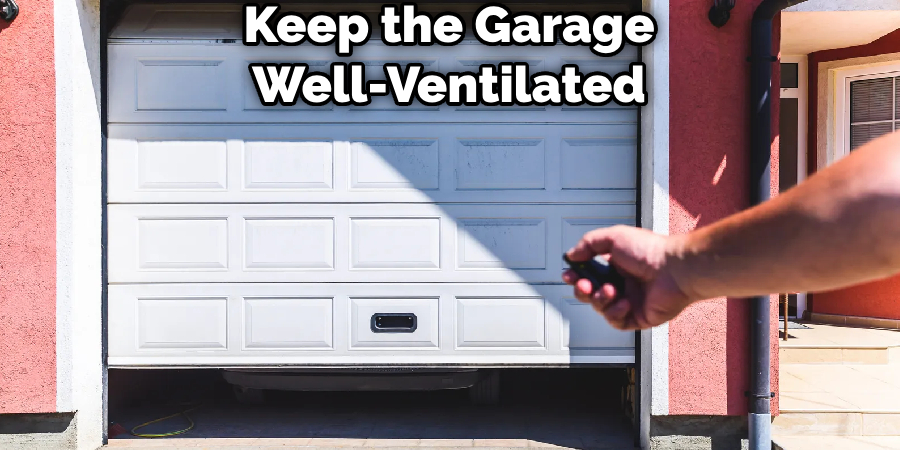
Step 7: Keep the Garage Clean and Clutter-Free
The last step to keep bugs out of the garage at night is to keep the garage clean and clutter-free. A dirty and cluttered garage attracts bugs with food, shelter, and nesting materials. To prevent bugs from infesting your garage, you should:
- Sweep and vacuum your garage floor regularly to remove dust, dirt, crumbs, and debris.
- Wipe down any spills or stains with a disinfectant solution to eliminate odors and bacteria.
- Dispose of any trash or garbage in a sealed bin and empty it frequently.
- Store any food items in airtight containers or remove them altogether.
- Organize your belongings in plastic storage bins rather than cardboard boxes to keep bugs away.
- Check your items and containers for pests before putting them away and discard any infested ones.
- Eliminate any clutter such as old clothes, papers, books, or furniture that provides bugs with hiding and breeding places.
Contact Professional Pest Control Services
If you have tried all the above methods but still have a severe bug infestation in your garage at night, you may need to contact professional pest control services for effective solutions. Professional pest control services have the expertise, equipment, and products to deal with any kind of bug problem in your garage. They can inspect your garage for signs of infestation, identify the type and source of pests, apply appropriate treatments and preventive measures, and monitor the progress and results. Some benefits of professional pest control services are:
- They can save you time and money by providing fast and efficient service.
- They can ensure safety and quality by using licensed and certified technicians and products.
- They can guarantee satisfaction by offering warranties and follow-ups.

FAQs About How to Keep Bugs Out of Garage at Night
What Can I Use to Keep Bugs Out of My Garage?
To keep bugs out of your garage, clean regularly, seal cracks, use traps, store food in airtight containers, and consider professional pest control if needed.
What Keeps Bugs Away at Night?
To keep bugs away at night, use bug sprays, essential oil repellents, citronella candles, and outdoor fans. Plant mint, sage, rosemary, and marigolds, or use Paw Paw, Catnip, and Pineapple weed for natural repellents. Maintain cleanliness, wash dishes promptly, and consider using screen rooms or artificial turf to reduce pests.
What Keeps Bugs Away Inside?
To keep bugs away inside your home, use natural repellents like mint, neem oil, basil, and citrus fruits. Seal gaps, maintain cleanliness, and utilize pantry items like bay leaves. Essential oils and vinegar traps can also help deter pests. Consider food-grade Diatomaceous Earth for safe insect elimination.
Conclusion
Keeping bugs out of the garage at night is not only important for your health and property but also for your peace of mind. By following these tips and methods for how to keep bugs out of garage at night, you can enjoy a clean and pest-free living space.
You don’t have to let bugs ruin your garage and your night. Follow these tips and methods to keep bugs out of the garage at night :
- Identify common nighttime garage pests.
- Seal cracks and gaps.
- Use bug-repelling lights and natural repellents.
- Spray insecticide on the inside and outside baseboards of your garage.
- Set up traps and barriers.
- Reduce water and humidity.
- Keep the garage clean and clutter-free.
- Contact professional pest control services.
Don’t wait any longer. Take action now and implement these tips and methods to keep bugs out of the garage at night. You will be glad you did.


